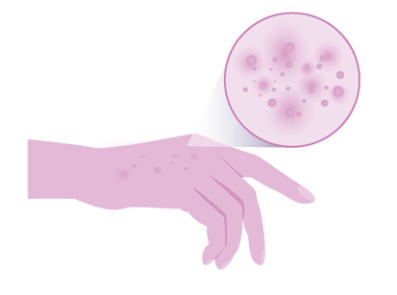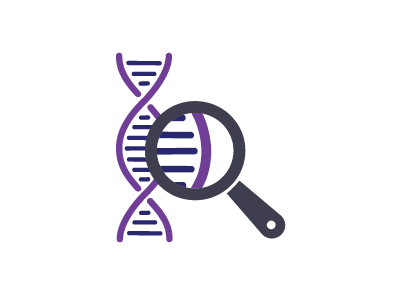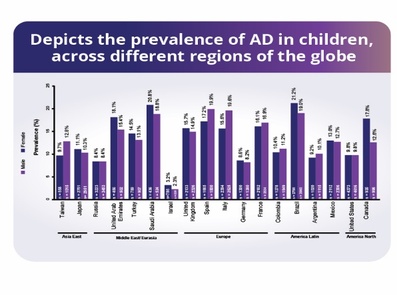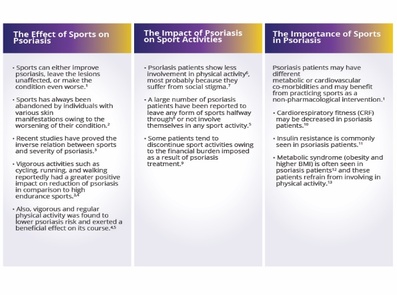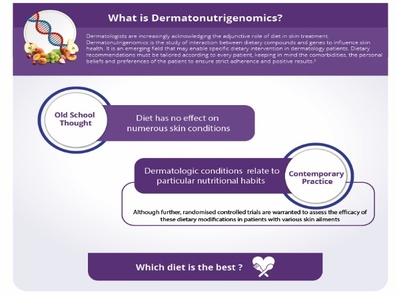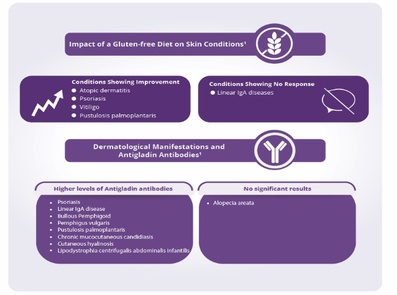DermatoConnect
State-of-the–art technology for timely diagnosis of skin cancer1
Introduction
Skin cancer is the second-most misdiagnosed cancer, after breast cancer, which profoundly affects the patient’s likelihood of survival. This demands early, decisive, precise, quantitative diagnostic tools for skin cancer.1
Overview of biosensors
Biosensors are analytical devices for skin cancer diagnostics consisting of three main components.1
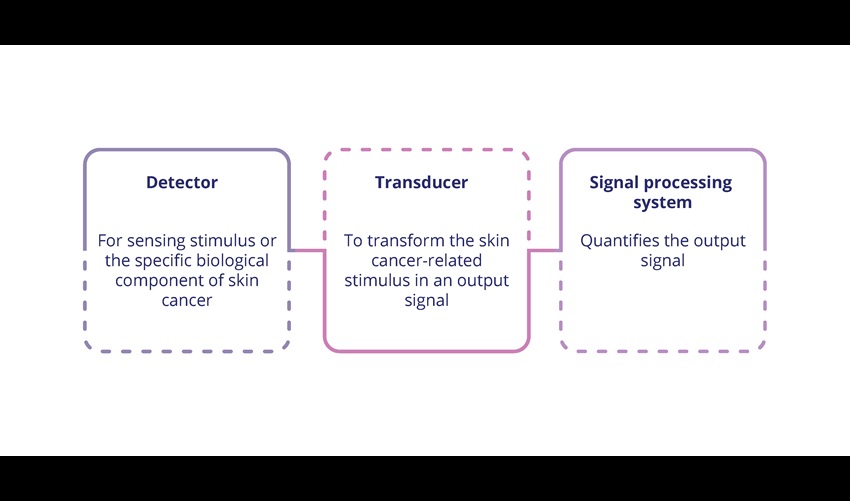
Bioreceptors are immobilised biological systems that estimate the specificity of the biosensors and are classified into four major categories.1

Based on the transduction techniques, the four categories of biosensors utilise components (mass, electrochemical, magnetic, and optical) with effective applications in detecting skin cancer. To enhance detection, secondary elements such as fluorophores are sometimes used. Lately, nanomaterials and nanoparticles have been utilised to further improve biosensing properties such as reproducibility, response time, and sensitivity for skin cancer diagnosis.1
Biomarkers associated with skin cancer
A summary of melanoma skin cancer biomarkers along with their clinically relevant characteristics is presented below.1


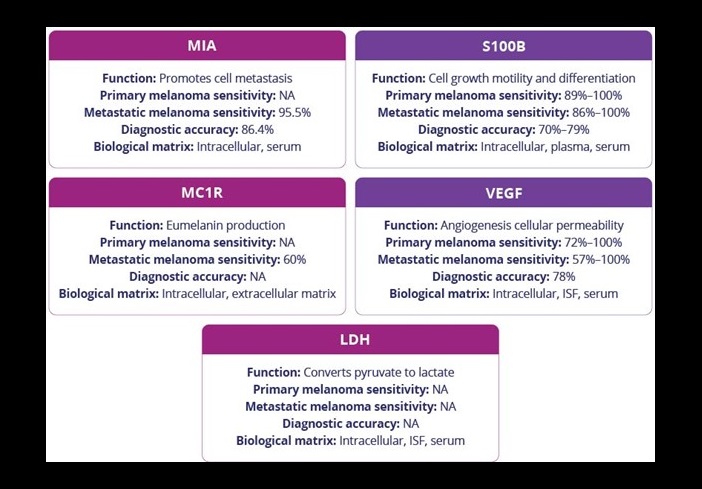
Adapted from: Chatzilakou E, et al. Biosens Bioelectron. 2024.
ISF: Interstitial fluid; LDH: Lactate dehydrogenase; MART-1: Melanoma antigen recognised by T-cells–1; MC1R: Melanocortin 1 receptor; MIA: Melanoma inhibitory activity; MITF: Microphthalmia-associated transcription factor; NA: Not available; PMEL: Premelanosome protein; S100B: S100 calcium-binding protein B; VEGF: Vascular endothelial growth factor
Optimal biosensors for skin cancer
The three prime sensors for melanoma detection biosensing technologies include optical biosensors, electrochemical sensors, and piezoelectric sensors. An overview of melanoma detection biosensing technologies for each of these sensors is provided.1
Optical bisensors1
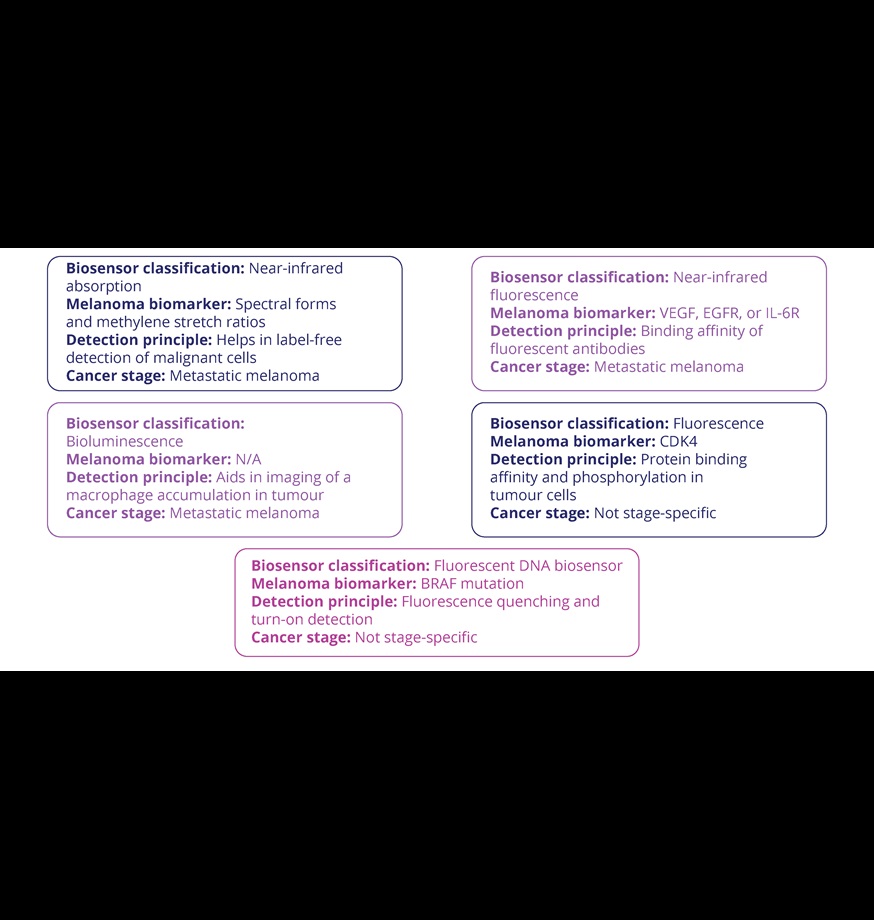
Adapted from: Chatzilakou E, et al. Biosens Bioelectron. 2024.
BRAF: B-Raf; CDK: Cyclin-dependent kinases; DNA: Deoxyribonucleic acid; EGFR: Estimated glomerular filtration rate; IL6R: Interleukin 6 receptor; NA: Not available; S100B: S100 calcium-binding protein B; VEGF: Vascular endothelial growth factor.
Electrochemical biosensors1
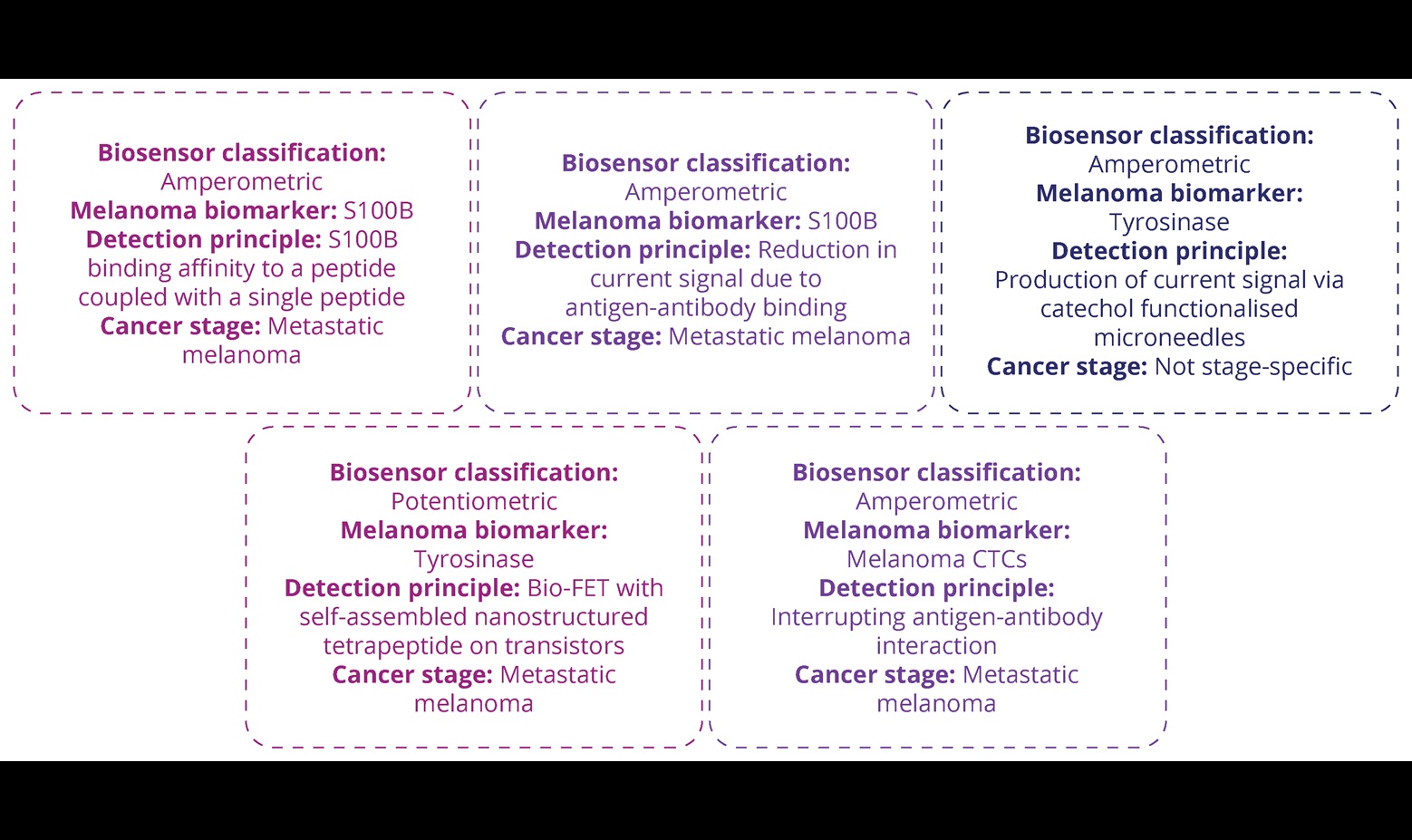
Bio-FET: Biologically coupled gate field-effect transistor; CTC: Circulating tumour cells; S100B: S100 calcium-binding protein B.
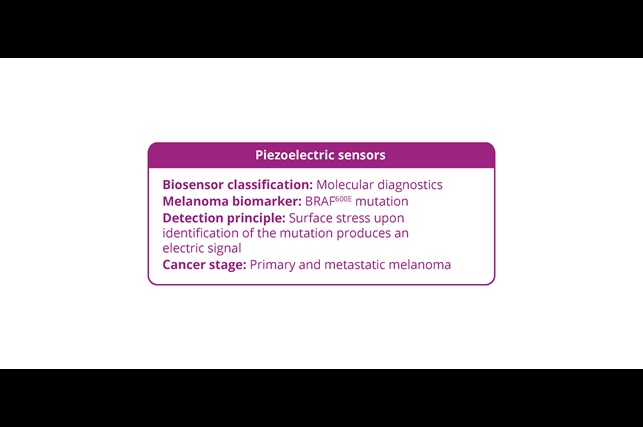
BRAF: B-Raf.
Is biosensor design safe to implement for skin cancer?
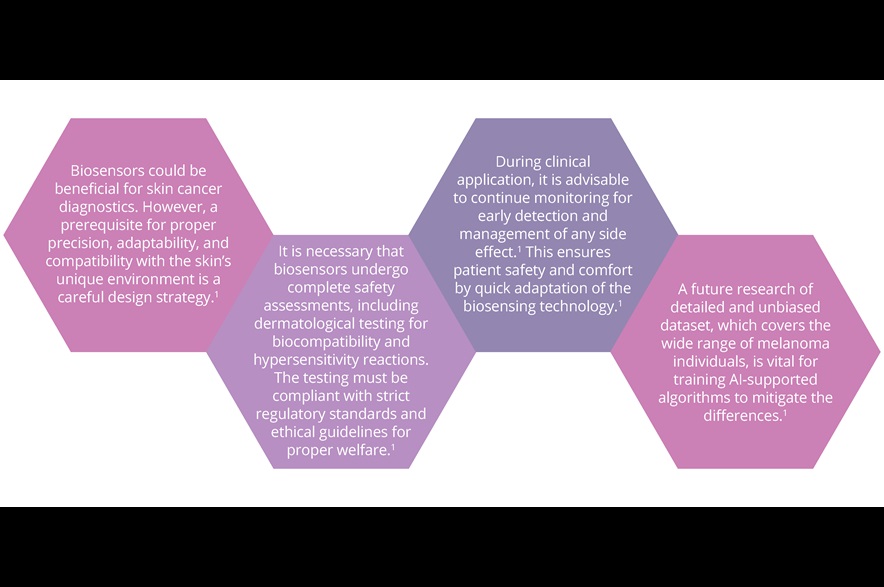
AI: Artificial intelligence

- This review study compiled some breakthrough studies implying that biosensing technologies could play a potential role in public health benefits.1
- Biosensing methods may significantly improve early detection precision economically and effectively.1
- However, there is a need for further research to understand the clinical relevance of biosensors in melanoma diagnosis and treatment.1
Key takeaways
- Globally, skin cancer is a critical health concern. Recent evidence imply that biosensors would be a promising candidate for skin cancer diagnosis due to their rapid detection accuracy and reliability.1
Reference:
- Chatzilakou E, Hu Y, Jiang N, et al. Biosensors for melanoma skin cancer diagnostics. Biosens Bioelectron. 2024;250:116045. doi: 10.1016/j.bios.2024.116045. PMID: 38301546.
BE-NON-2024-00317 - Date of creation 12/2024



